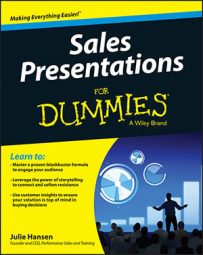The three part structure — an opening, a body, and a conclusion — is the basis of most presentations, speeches, film, television, and theater. Invented by Aristotle, it's a structure your audience is familiar with and can easily follow. This structure has many variations: chronological, vendor qualification/problem/solution, and situation, complication, and resolution, to name three. The structure you choose depends upon your goal.
Some types of three-part structures are better for educating, entertaining, or motivating audiences. In sales, you want to be sure to use a structure that persuades and drives home your message in a way that encourages your prospect to take action at the end of your presentation. The situation, complication, resolution structure is proven to be most effective at accomplishing that goal.
This persuasive structure places the focus on your prospect's challenge or objective — not on your product, service, or company. The way the situation, complication, resolution structure organizes your content has the ability to change your prospect's perception, open her mind to new ideas, and motivate her to take action. This structure also addresses many of the problems associated with the typical sales presentation structure and helps to increase your prospect's attention, keep her engaged throughout your presentation, and increase recall of your message.

